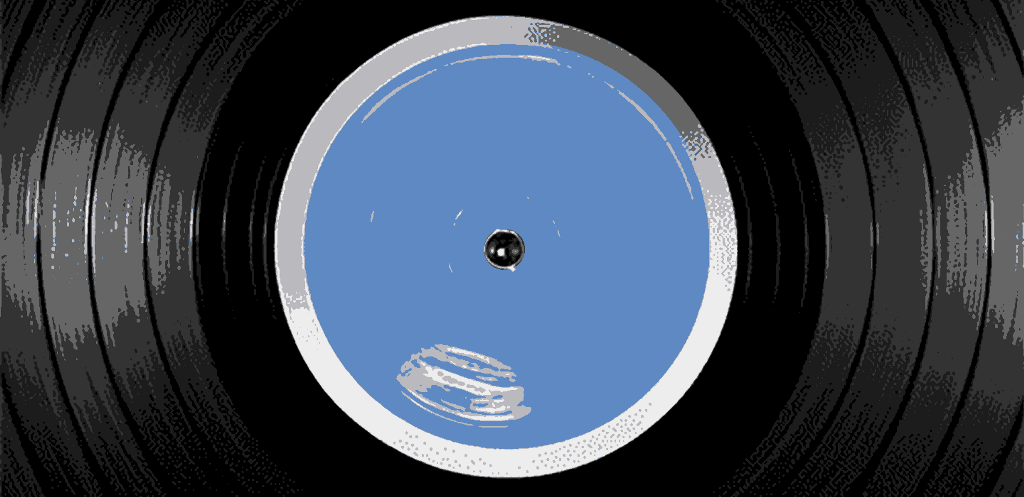It’s not a secret that for the last several years, vinyl record sales have been trending upward — with sales in 2016 reaching their highest point since 1988. Estimates vary a bit, but at bare minimum, the number of records manufactured annually is well into eight figures. Regardless of whether you think vinyl sounds better, snatch them up them as collectables, or see them as a good way to support artists, it’s serious business.
Vinyl even has its own biannual pseudo-holiday, Record Store Day. Taking place in April as well as on Black Friday, it’s fueled by exclusive titles pressed specifically for the occasion and available only at independent record stores. With that increased demand, the various record-pressing plants in North America and Europe become more crowded.
Until recently, however, addressing demand and increasing capacity at record-pressing plants was easier said than done; nobody had manufactured any new record presses for decades.
So when presses went on the market, everyone took notice. Just last year the contents of former South African major label Gallo Record Company, including its vinyl plant, in Harare, Zimbabwe were listed on eBay for £160,000 (or about $207,000). There are no longer any record-pressing plants in Africa.
Of course, there wasn’t always this kind of demand.
“Back in about 1984, we went to an auction somewhere here in Southern California,” says Rick Hashimoto, the plant manager of RTI, a record pressing plant in Camarillo, California. “One of the big pressing plants was going out of business and you could buy one of these SMT presses for $500. Five hundred bucks. I think two or three of them out of maybe 50 were purchased, and all of the rest of them got hauled off to the scrap man. Isn’t that sad?”
The CD was a few years into its existence and cassettes had become a dominant format due to their portability and the improvements in reducing tape noise, so there was little interest. But now, thanks mostly to a mix of vinyl’s unique sound signature, the oversized packaging, and yes, hipsters’ newfound love for the old, vinyl is booming again, and the pressing plants have the opposite problem: Many are at capacity. If they want to expand, it’s not easy.
Two companies — Germany’s Newbilt Machinery and Canada’s Viryl Technology — are looking to meet that demand by building and selling brand-new record presses. Retail price for a press is about $195,000 including a one-year warranty on parts and service, with service contracts available thereafter. And if you were to start a plant from scratch, you don’t need to find experienced record press operators to staff the facility, as the machines can run on their own.
“We started doing this in December 2014,” says Alex DesRoches, Marketing and Media Manager for Viryl. That’s when Chad Brown, now Viryl’s CEO, got laid off from an engineering job along with several of his colleagues. He had also owned a pressing plant up until 2007; since he already had the skill set and was looking for something to do, building new record presses seemed like a good idea. “We sort of understood the need for new technology,” DesRoches says. “I don’t think many people thought [the vinyl revival] was more than a trend, but that’s been disproven because people have been listening to records since the ‘40s, and it seems to be the heavyweight music format now.”
Viryl doesn’t just want to replicate the presses of the past, though: They’re looking to build something better. “At first, we were actually approached by a company who said ‘Hey, we want you to clone some presses.’ We thought about it for a week or so and said no. We don’t want to clone a press, because that will clone the problems of the old technology, and there’s a lot of them. We then took the best parts of old technology, modernized them, and that’s where we came up with the Warm Tone.”
So far, Viryl’s first generation of presses — a computer-run system called the Warm Tone — have been purchased by the Hand Drawn Records label in Dallas in order to open their own plant (the first to actually install and run Viryl’s presses), a CD plant in Toronto, and Canada Boy Vinyl in Calgary — which is Canada’s only vinyl-pressing plant. Writes The New Yorker: “The best vintage presses can produce a record every thirty to forty seconds; the Warm Tone promises to do so in twenty-five seconds, a significant advantage for a plant that presses tens of thousands of records a day.”
WarmTone™ pic.twitter.com/0He6X71jIG
— Viryl Technologies (@viryltech) September 14, 2016
Because even if you are lucky enough to track down an old press, as with any used machine, there are no promises that it’ll be fully functional. “If you do find a machine, they’re usually junk,” says DesRoches. “I know many plants right now who are set up on old machinery, and they have four presses or something from the ‘60s or the ‘70s, and if they’re lucky, one of them runs. The rest of them, they’re just scratching their heads trying to re-engineer a piece that hasn’t been engineered for years, and it’s just a nightmare. It’s an ugly process.”
He’s not kidding about re-engineering parts: Independent Record Pressing in New Jersey has had to spend thousands of dollars just to get screws custom-made to replace the ones in the used presses they had bought.
At RTI, though, Hashimoto doesn’t see them having any need for new presses any time soon: They’re used to working with the presses that they have, having kept up an impeccable standard of quality for over 40 years — going back to their early days of pressing the records for syndicated radio shows like “America’s Top 40.” Because it’s a venue where even the faintest hint of pops and clicks would be deemed completely unacceptable, RTI’s standards are very high.
Rich, warm, crystal clear sound! This RTI 180gm vinyl press of 1999 is simply… "Auralgasmic"! ? recommend! ??? pic.twitter.com/EGBxdzO9ck
— RVR (@erivertree) August 4, 2016
“We take very good care of our machines,” Hashimoto says. “They’re our life, and we realize that. We’ve put on several controllers, so we can control the temperature a lot more accurately then they could back in the ‘80s or ‘90s. We’ve improved the handling, it makes it easier for our machine operators. We’ve worked on hot rodding a couple of the machines, and gotten them to go a little bit faster, or to make a better record.”
With more and more presses going online, the backlog of orders at many of the major plants will eventually die down, and vinyl releases will come out in a more timely fashion after they’re announced. Even the price of vinyl records, which went up this year thanks in part to the scarcity, could potentially end up trending back downward. “It’s hard for labels to get stuff out on vinyl,” says DesRoches. “If you don’t have a current account that you’ve had for years with a pressing plant, then good luck trying to get one.” While some plants, like RTI, make a point of always having some capacity available, congestion and backlogs have become a huge problem across the industry.
New presses (and the revitalization of old ones) mean more vinyl. All that’s left is to make good music.

